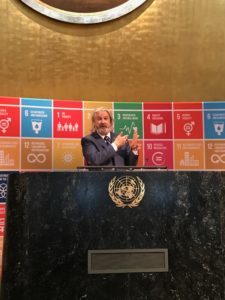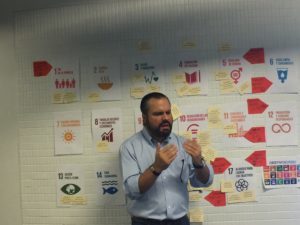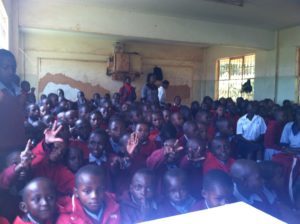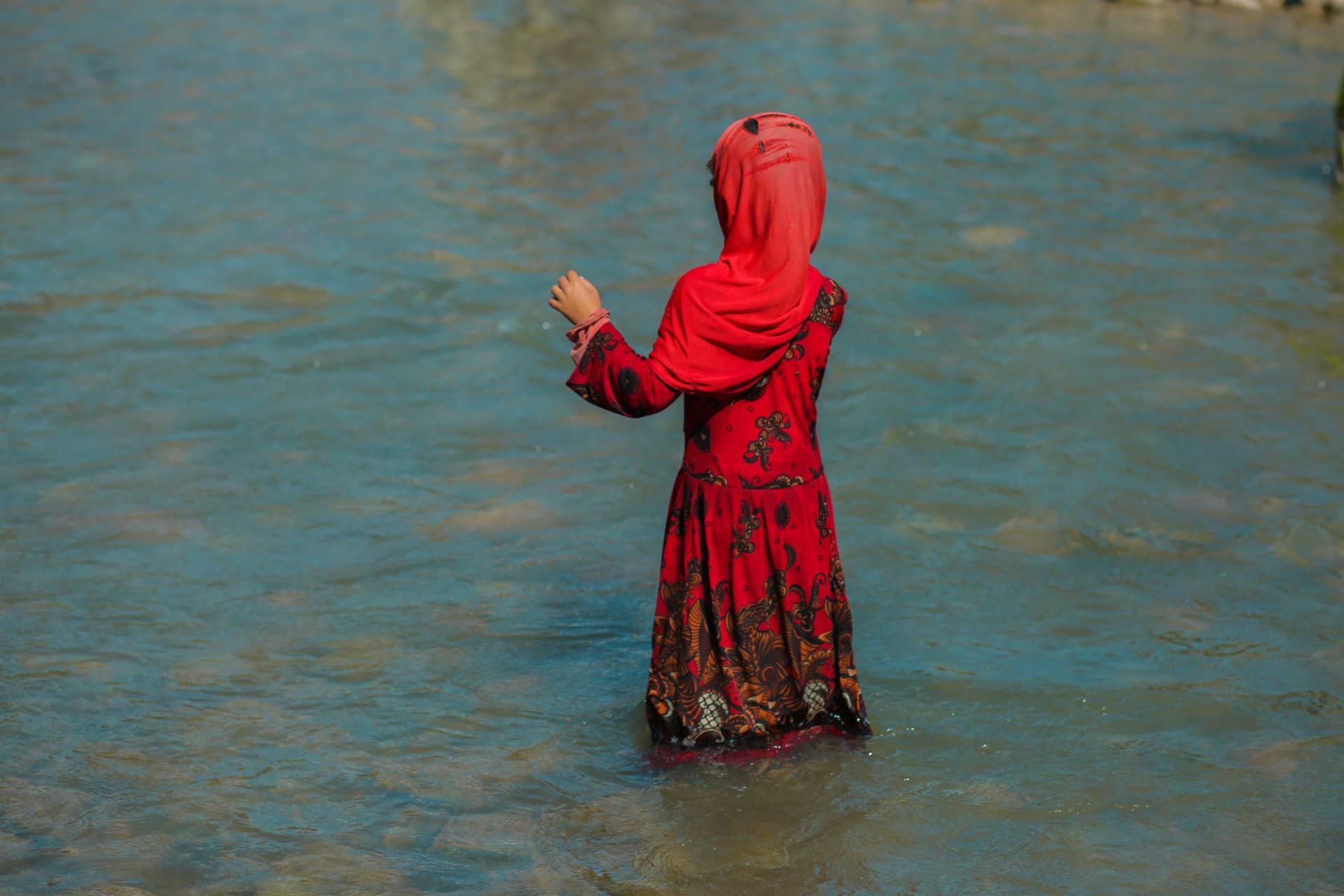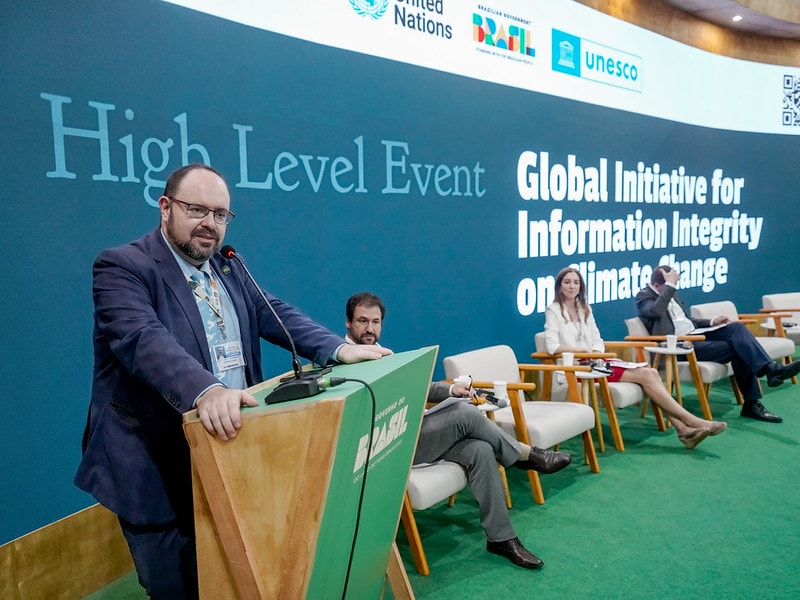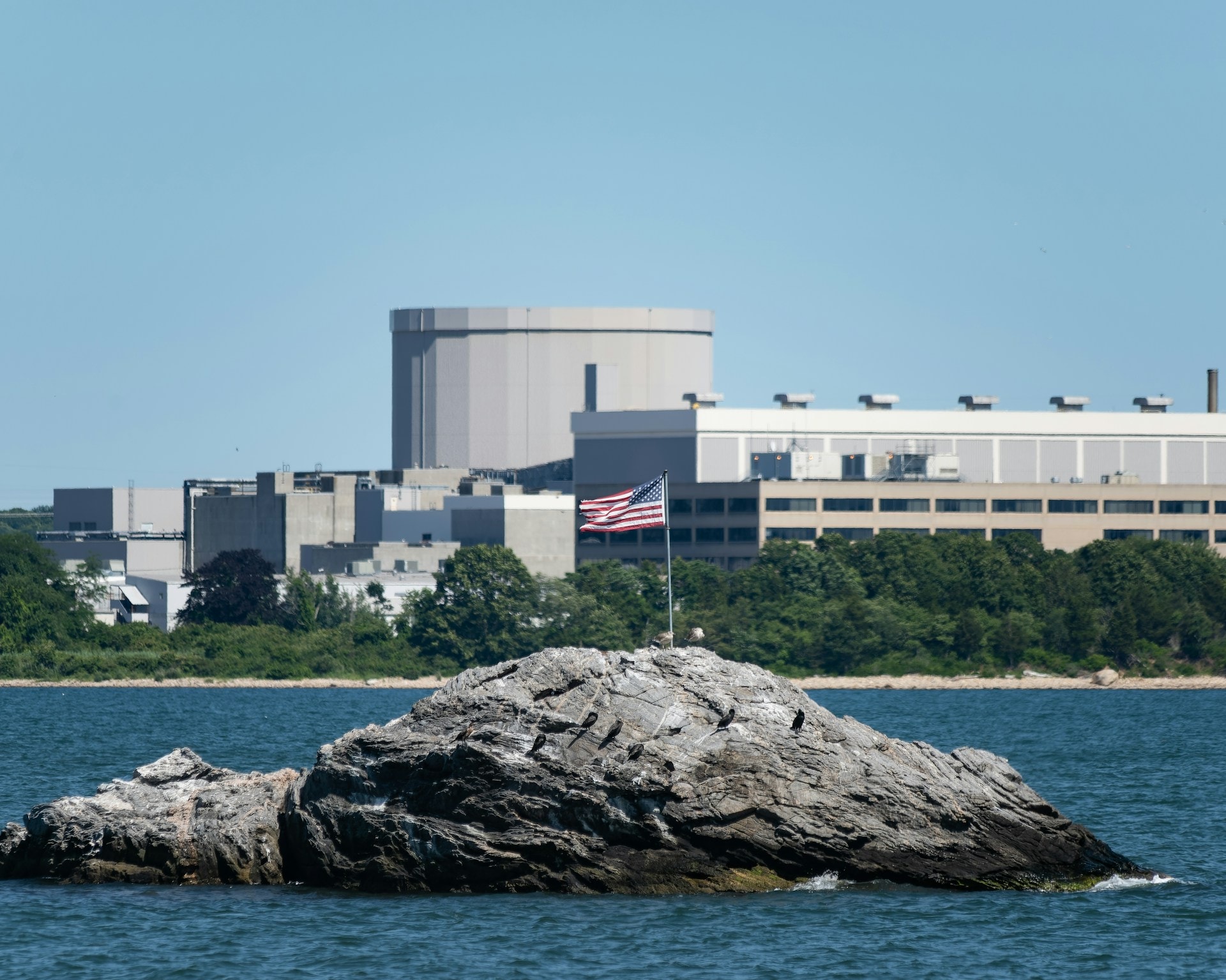Sustainable development is not possible without ensuring the availability and sustainable management of water and sanitation for all. As Sustainable Development Goal 6 states, access to WASH (water, sanitation and hygiene) is a basic right, and persons with disabilities are no exception.
Persons with disabilities comprise an estimated 15 percent of the world’s population, a total of one billion people. They are overrepresented among the most impoverished in the world and the 2030 Agenda for Sustainable Development states that more than 80 percent of them live in poverty.
Persons with disabilities face widespread exclusion from all areas of economic, political, social, civil and cultural life, including employment, education, health care, and access to WASH services. They experience higher rates of poverty and deprivation and lower levels of income than the general population. This stems from pervasive discrimination and stigma, unequal opportunities, and physical and attitudinal barriers. Moreover, poverty may increase the risk of disability through malnutrition, lack of access to WASH, and inadequate access to education and healthcare.
IN THE PHOTO: Colin Allen and SDG 6, 2017. CREDIT: Stakeholder Group of Persons with Disabilities /Elizabeth Lockwood
Persons with disabilities were not mentioned in the Millennium Development Goals (MDGs) and, as a result, were excluded from many important development initiatives and funding streams around the world. By finally including them, he 2030 Agenda for Sustainable Development has opened the doors for their participation and recognition as active members of society. The global Agenda and its Sustainable Development Goals (SDGs), including Goal 6, cannot and will not be achieved if the most vulnerable citizens are left behind.
Persons with disabilities are not explicitly referenced in Goal 6 but can be considered included in the wording in targets 6.1 “By 2030, achieve universal and equitable access to safe and affordable drinking water for all” and target 6.2 “By 2030, achieve access to adequate and equitable sanitation and hygiene for all and end open defecation, paying special attention to the needs of women and girls and those in vulnerable situations.” Moreover, there is an important reference in the WASH paragraph in the recently adopted (on 18 July, 2018) Ministerial Declaration of the 2018 High-level Political Forum:
“in particular, we must pay special attention to ensuring access to sanitation and hygiene facilities, taking into account the specific needs of women and girls for menstrual hygiene management and of persons with disabilities, without compromising their safety and dignity.”
In addition, Article 25 of the United Nations Universal Declaration of Human Rights and Article 27 of the United Nations Convention on the Rights of the Child call for the right to adequate living standards for children and all people, which includes access to safe water.
Access to clean water and basic sanitation is equally guaranteed under the United Nations Convention on the Rights of Persons with Disabilities (CRPD). Article 28 of the CRPD calls to “ensure equal access by persons with disabilities to clean water services” and that “States Parties shall take appropriate steps to safeguard and promote the realization of this right without discrimination on the basis of disability.”
Background
Globally, 2.5 billion people lack sanitation and 663 million people do not have access to safe drinking water despite the fact that WASH are among the most basic of human needs. Since persons with disabilities are overrepresented among the most impoverished people, they remain the most vulnerable.
More than 20 percent of deaths are attributed to unsafe water, inadequate sanitation or insufficient hygiene among children under the age of 14 in developing countries. Unsurprisingly so, considering that more than half of all primary schools in developing countries do not have adequate water facilities and nearly two-thirds lack adequate sanitation.

IN THE PHOTO: Hogar Escuela, Deaf school in Nicaragua, 1998. CREDIT: Volunteer/Elizabeth Lockwood
Urbanization is increasing the demands on the world’s limited resources. Currently, almost 1 billion people live in low-income settlements. A significant proportion of these people have been displaced by climatic, environmental, and food security factors.
Once people live in urban environments, they tend to become net food consumers, rather than producers and often have limited access to water, sanitation, energy needs and other services. This significantly impacts persons with disabilities of whom 1 billion are estimated to be urban dwellers by 2050.
Persons with disabilities face both technical and social barriers that thwart their access to basic sanitation at great cost to their health, well-being and autonomy. They are frequently unable to access clean water, toilets and sanitation, as well as gather and use water due to inaccessible structures or lack of information access in Braille and sign language. For instance, they are often pushed to the back of the line at distribution points, and thus denied access to water. The lack of access to safe and clean water and sanitation facilities can have serious implications, such as inaccessible toilet and water facilities, which are major contributing factors for school dropout among children with disabilities, especially girls with disabilities.
Through different projects, it has become clear that persons with disabilities are often unable to access community facilities, such as wells and latrines, and are often excluded from disaster management activities. Even when a tapstand is available, its location may still be inaccessible to wheelchair users. This exclusion occurs despite the fact that most water and sanitation facilities could be made more reachable to all persons with disabilities with only minor, low cost and sustainable adaptations of current facilities and practices and new facilities if planned from the outset.
IN THE PHOTO: Panama regional SDG training to DPOs, 2017. CREDIT: International Disability and Development Consortium/Elizabeth Lockwood
Pervasive discriminatory attitudes, lack of awareness, and communication, informational, attitudinal and physical barriers prevent persons with disabilities from fully participating in their communities, including decision-making processes around WASH programs.
Information on the accessibility of water supplies is particularly scarce when it comes to hygiene, though the inclusion of persons with disabilities is higher on the agenda than a decade ago. WASH personnel are far more likely to recognise that inclusion is a legitimate concern and part of their responsibility.
Benefits of the inclusion of persons with disabilities in WASH
It is important to provide sustainable WASH for various reasons. Firstly, improvements to WASH represent a good economic investment since some countries lose as much as 7 percent of their GDP due to inadequate sanitation. Secondly, improving accessibility to WASH is a key way to reduce inequalities, including for persons with disabilities who are among the most affected by the lack of access to adequate WASH services. Thirdly, better access to WASH means higher levels of school achievement and greater productivity. Finally, access to WASH is a basic human right closely linked with dignity , recognised by both the United Nations General Assembly and the Human Rights Council in 2010.
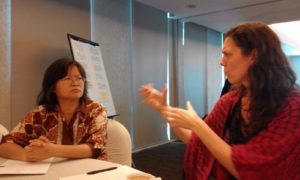
IN THE PHOTO: Indonesia, using sign language, 2015. CREDIT: CBM/Elizabeth Lockwood
People included in WASH programs are reported to experience greater dignity and self-reliance, improvements in health and nutrition, and greater access to education and livelihood opportunities. If WASH programs are inclusive for persons with disabilities, others also benefit, including older persons and pregnant women.
Below are a few key suggestions to make WASH facilities inclusive and accessible for persons with disabilities.
- Include persons with disabilities and their representative organisations as key players and leaders in consultations at all stages of development (design of facilities, infrastructure planning, monitoring and evaluation, management of facilities). For example, in 2009, 9 additional standpipes (to the existing 35) were installed in Tenkodogo, Burkina Faso. After consultations with local organisations of persons with disabilities, six out of the nine water points were made accessible for all and persons with disabilities became part of the process of managing the water points. Additionally, as sign language interpreters were invited and documents made available in Braille.
- Design and build WASH facilities according to the universal design principles, meaning that “the design of products, environment, programmes and services to be usable by all people, to the greatest extent possible, without the need for adaptation or specialised design” (CRPD, 2006). In particular, WASH facilities should be made physically accessible for people with different types of disabilities.
- Partner with local organisations of persons with disabilities (DPOs) for a better understanding of existing problems . In addition, more effective accessibility and safety audits can be carried out in collaboration with DPOs to ensure that the path to facilities and the facilities themselves are accessible for people with different types of disabilities. For example, WaterAid in Nepal advocated for accessible public toilets in Kathmandu by collaborating with the National Federation of the Disabled and the Association of INGOs’ disability working group. Together they created a series of films highlighting how the lack of accessible toilets impacts persons with disabilities.
- Disseminate information in various formats in order to make WASH services inclusive and accessible to as many people as possible. For example, WaterAid’s Count Me In video series in Cambodia had a huge impact thanks to its creative and clear format.Additionally, have DPOs provide disability awareness trainings to WASH personnel and other relevant actors.
IN THE PHOTO: Deaf School in Kenya, 2014. CREDIT: CBM/Elizabeth Lockwood
In line with 2030 Agenda for Sustainable Development and the UN Convention on the Rights of Persons with Disabilities, persons with disabilities must be included in all sustainable development efforts, including sustainable WASH, and must not be left out of the process of creating a more sustainable world for all.
EDITOR’S NOTE: THE OPINIONS EXPRESSED HERE BY IMPAKTER.COM COLUMNISTS ARE THEIR OWN, NOT THOSE OF IMPAKTER.COM.
FEATURED PHOTO: Persons with Disabilities HLPF 2017. CREDIT: Stakeholder Group of Persons with Disabilities/Elizabeth Lockwood



